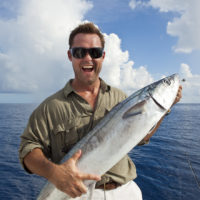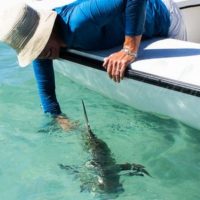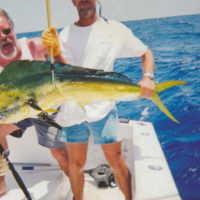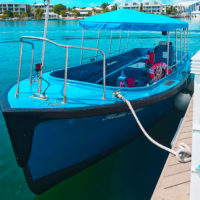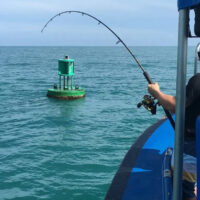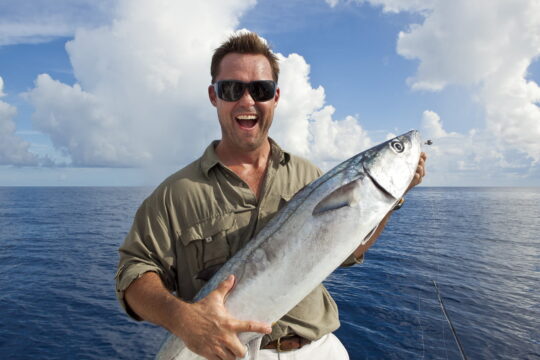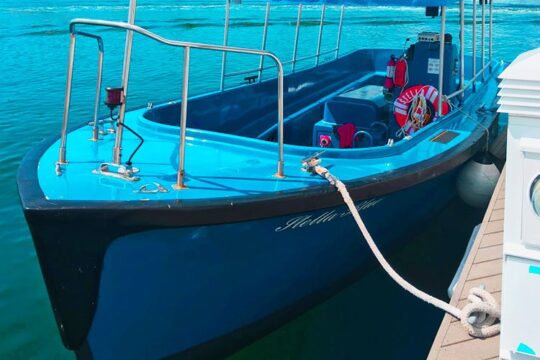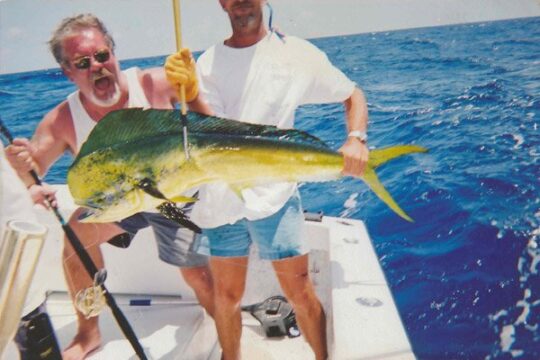Fishing for Mahi-mahi in Key West
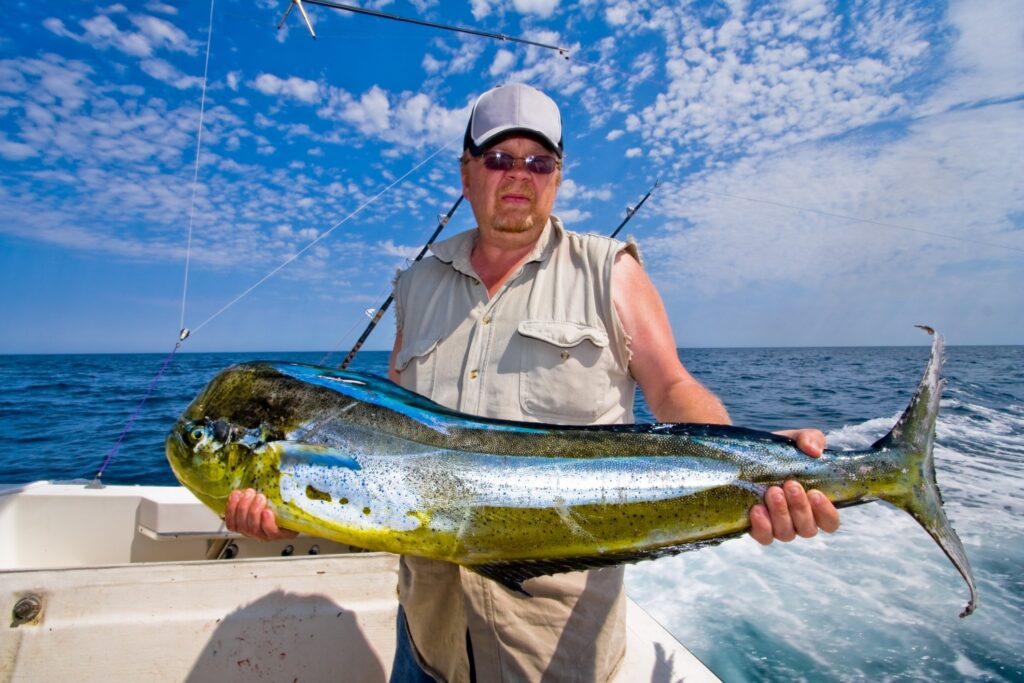
The Mahi-mahi or Dolphinfish is one of the most popular sport fishes in Florida waters because they are easy to catch and delicious as food fish.
Mahi-mahi (Coryphaena hippurus)
(Florida Record 81lbs.) The English name for this fish causes confusion because the Common Dolphinfish, Coryphaena hippurus is not related in any way to the marine mammal of the same name. In Pacific waters, it is usual to refer to the Dolphinfish by its Hawaiian name “Mahi-mahi” or by the Spanish “Dorado”.
Mahi-mahi have compressed bodies, with long dorsal fins extending almost their entire length. Their tailfins are long and sharply forked. Mature “Bull” Dolphinfish have large, vertical foreheads that extend well above the body proper, while females have rounded heads and are usually smaller than males. Mahi-mahi can reach 6 feet in length and 65 lbs. but a more common size is 3 feet and about 30 lbs. Their bodies are slender and long, and they can swim as fast as 57.5 mph.
Mahi-mahi are dramatic in coloration, changing color quickly and reflecting a wide range of brilliant hues when alive underwater. Large males in particular display bright golden sides, with irregular blotches of metallic blues and greens on the back and sides, and white and yellow on the underside. When the fish attacks prey, 3 black diagonal stripes appear on each side of the body. When caught, the fish quickly fade to a uniform silvery color.
Mahi-mahi Habitat and Behavior
The Mahi-mahi is found in tropical and subtropical waters around the world. It is abundant throughout the Caribbean, in the Florida Current, along the Gulf Stream, and in the Gulf of Mexico. They are easy to locate because they strongly prefer floating debris, and are often found offshore under floating objects or mats of sargassum weed. They are also known to follow large ships in open water. Adult fish travel alone or in pairs, while small fish gather in schools that can include over 50 individuals.
Mahi-mahi are fast, agile predators that can outrun and overcome most prey items. They rely on vision to hunt, and feed primarily during the day, but may also feed on bright, moonlit nights. Mahi-mahi often hunt in pairs or small packs. The weedlines and floating debris these fish associate with attract many types of baitfish and invertebrates, and Mahi-mahi are generalist feeders with diets that vary according to season and size of the individual. They feed on flyingfish, man-o-war fish, sargassum fish and triggerfish, juveniles of large pelagic fish like tunas, billfishes, jacks, and mackerels, and invertebrates including crabs, squid, and shrimp. They will also eat their own young.
Fishing for Mahi-mahi
Mahi-mahi are very popular with fishing charters because they are so easy to find and catch, particularly during the summer, and Florida waters offer some of the best Mahi-mahi fishing in the world. Beautiful, hard-fighting, acrobatic, and great on the table, they will satisfy the experienced angler armed with light tackle or a fly rod, and will also keep families happy with fast action and good-sized fish.
Trolling live bait or lures along offshore weedlines is a popular way to fish Mahi-mahi. Natural baits such as ballyhoo are great. Mahi-mahi respond well to chumming, and once a school is attracted, the fish will stick around. Hookless teaser lures or batches of live bait tossed in the water will excite the fish into a feeding frenzy, and flies or lures may then be cast directly into the school. Once hooked, Mahi-Mahi fight well with many jumps, and colorful displays when brought to boatside. The meat is delicious, and Mahi-Mahi is common in restaurants, markets, and as a favorite table fish for many people.

